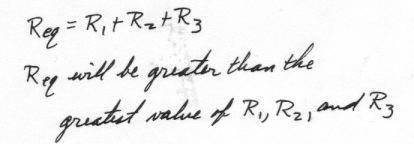
PHY 1161
Hour Exam #1
February 10, 2003
1. Consider charges of 1 µC, 2 µC, and – 3 µC
at three corners of a square of side l = 0.10 m as shown below. What
is the electric potential at the fourth corner of the square? SI
units are important; they are not "optional"!
2. a) Find the equivalent capacitance the circuit shown below. 3. Consider the circuit shown below. 4. Consider the RC circuit shown below: 5. Concept Questions:
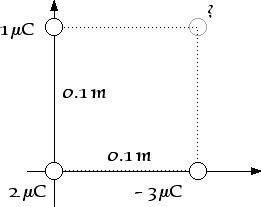

b) Find the voltage across the 100 µF capacitor,
c) Find the charge stored on the 100 µF capacitor.
d) Find the energy stored in the 100 µF capacitor,
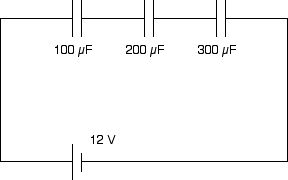
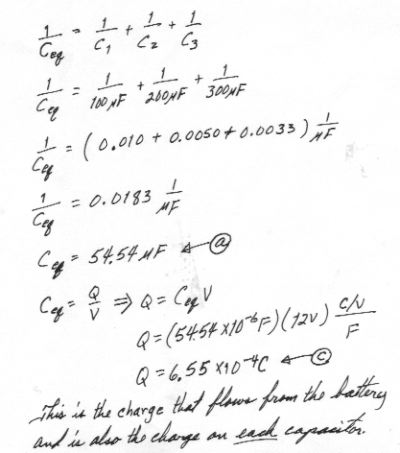
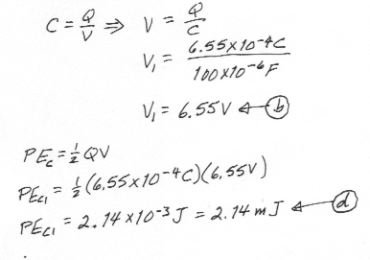
a) Find the equivalent reistance of this circuit.
b) Find the total power supplied by the battery.
c) Find the voltage across the 100-ohm resistor.
d) Find the current through the 100-ohm resistor.
e) Find the power absorbed by the 100-ohm resistor.
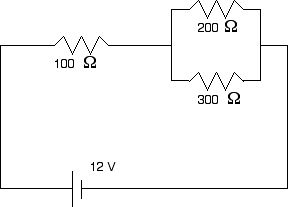
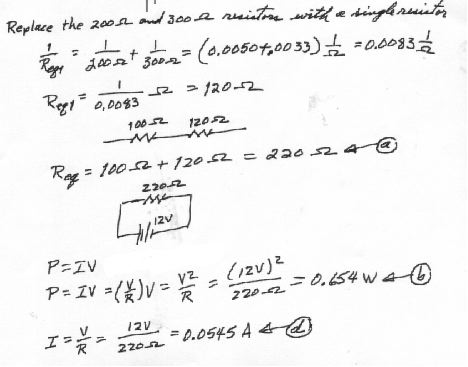
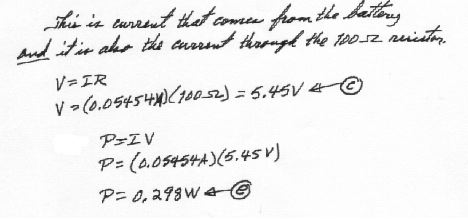
a) What is the characteristic time of this RC circuit?
b) What is the initial current through the resistor immediately upon closing
the switch S?
c) What is the final charge on the capacitor long, long after the switch has
been closed?
d) What is the current through the resistor two seconds after the switch
is closed?
e) What is the charge on the capacitor three seconds after the switch
is closed?
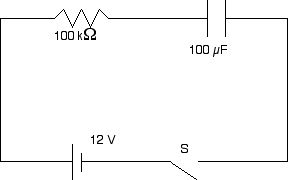
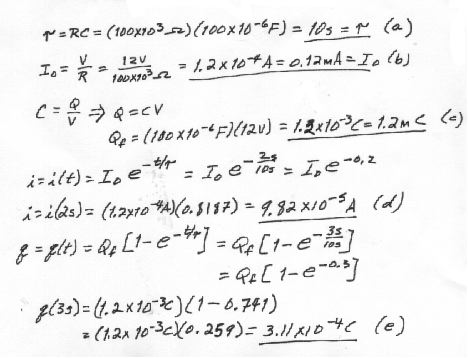
a) On what kind of charges does an electric field originate
and terminate?
That is, an electric field will point from what
kind of charge to what kind of charge?

b) What does a negative electric potential mean?
Remember that electric potential is the potential energy a test charge q would
have at some point, divided by that charge q. So a negative electric potential
means that a positive test charge q at that point would have negative potential
energy. That means work will have to be done on that positive test charge q
to move it to the state where PE = 0 or infinitly far away from all the other
charges.
V and PE are scalars! There is no direction associated with potential energy
nor with electric potential!
c) If three capacitors are connected
in parallel will the equivalent capacitance be greater than the
greatest of the three or smaller than the smallest of the three?

d) If three resistors are connected
in series will the equivalent resistance be greater than the greatest
of the three or smaller than the smallest of the three?
